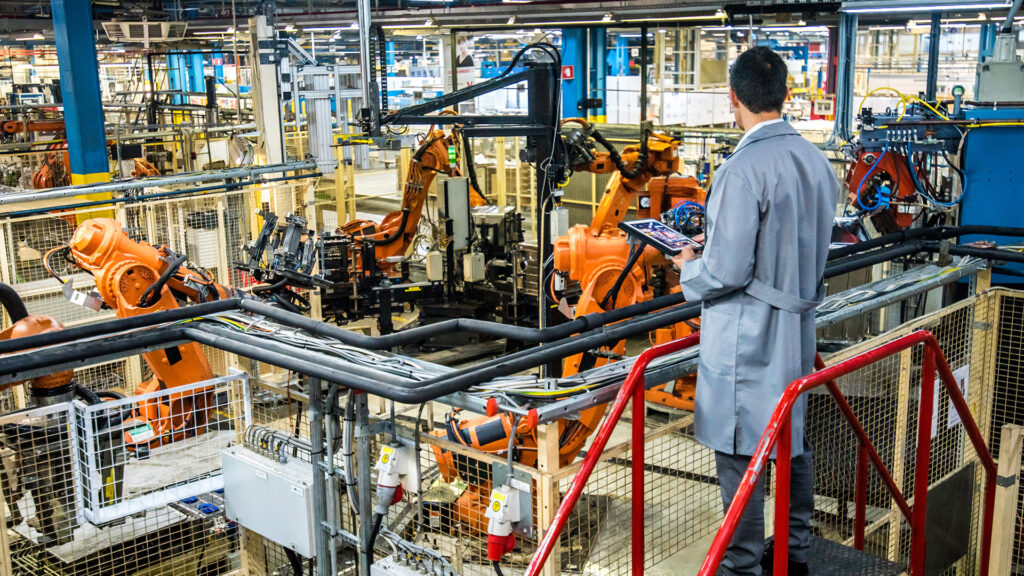When it comes to product development, ensuring data flows efficiently throughout manufacturing enterprises and extended supply chains is key to delivering higher-quality products to market faster.
Product Lifecycle Management (PLM) solutions such as Siemens Teamcenter form the information backbone to many products, from initial concept, through design, development, manufacturing, service, and end of life.
PLM provides extended teams with ready access to structured data, which can deliver powerful insight and support faster, better-informed decisions. This isn’t just limited to design and manufacturing; it can also extend to many other areas including purchasing, quality, marketing and sales.
However, manufacturing firms can find themselves limited in the types of data they can work with because extended teams do not have access to the right computing hardware.
Extending the reach of 3D data
3D models play a pivotal role in any modern product development process. They provide an accurate product definition, complete with rich metadata for precise Bill of Materials (BOMs). They fuel downstream processes like visualisation, simulation and CAM.
The 3D models created in CAD/CAM/CAE tools like Siemens NX are typically very complex and require powerful GPU-accelerated workstations. Without GPU acceleration it can be impossible to work effectively. Models can move erratically in the application viewport, making it very hard to position them precisely. In a worst-case scenario, they simply will not load.
Providing designers and engineers with GPU-accelerated workstations is essential, but it is much harder to justify their deployment to the wider workforce. Typically, managers and others who only need occasional access to 3D models are equipped with a standard laptop, PC or virtual machine (VM). Without the appropriate hardware, 3D data can remain untouched within the PLM system, significantly limiting the reach of this valuable resource.
The cloud presents a huge opportunity for the proliferation of rich 3D models throughout the manufacturing enterprise and extended supply chain.
Cloud workstations are GPU-accelerated virtual machines (VMs) that can be accessed securely, on-demand, by anyone who needs them, using a laptop, PC, tablet, thin or zero client. With complete flexibility of access, users can be in the office, at home, or even on the shop floor.
PLM systems such as Siemens Teamcenter can also be hosted securely in the cloud, alongside the cloud workstations. This means 3D models load quickly, giving firms near-instant access. As only encrypted pixels are streamed to the end device, there is no need to download or upload huge datasets, which saves time and can help secure intellectual property. Access rights can be switched on / switched off at the click of the button, enabling greater control and security. There is no need to worry about using the wrong file version or confidential data getting into the wrong hands, as no files ever leave the cloud’s secure datacentre environment.
This presents a huge opportunity for design and manufacturing firms. Extended teams, anywhere in the world, can make better use of 3D data, supporting many different workflows. For example, adding markups and comments to a 3D model to communicate a change order request, viewing large assemblies to help author bill of materials (BOMs), or managing configurations and variants. It can also extend into digital mockup to support more complex processes such as static and dynamic clearance analysis, part motion studies or to simulate maintenance procedures.
There is also great potential beyond design, engineering, and manufacturing. In technical documentation, 3D data can be repurposed for spare parts catalogues or interactive service manuals. In product marketing, easy-to-use visualisation tools can be used to create perfect shots for product brochures. 3D geometry and metadata could even be brought into game engines to generate real-time experiences that can be viewed in browsers or on mobile devices.
Workspot cloud workstations
Enterprise cloud specialist Workspot has extensive experience of working with 3D design and engineering applications. The company provides firms of all sizes with an easy-to-use cloud-native SaaS platform with which to deploy, scale and operate cloud workstations.
Leveraging Microsoft Azure, Workspot can deploy both cloud desktops and workstations, including NVv4, a family of GPU-accelerated Windows 10 cloud workstations powered by 2nd gen AMD EPYC processors and AMD Radeon Instinct GPUs.
The beauty of Microsoft Azure NVv4 is that hardware resources can be matched precisely to workflows – in much the same way one might configure a desktop workstation with different components. This could be entry-level, low-intensity GPU workloads like the viewing of 3D parts, all the way up to more demanding workflows that require full-GPU processing power, such as design review or digital mockup of a large engineering assembly.
In contrast to other cloud workstations, Microsoft Azure NVv4 can go down to a granular level in terms of GPU resource allocation. This is made possible by the AMD Radeon Instinct MI25 GPU, which can be ‘virtualised’ at a hardware level. Customers can choose from four different VMs – either with one eighth, one quarter, one half or one whole of a Radeon Instinct MI25 GPU.
This level of flexibility is simply not available with other cloud workstations, where VMs typically have one or more GPUs. In workflows where relatively low levels of GPU acceleration is required firms often end up paying for expensive GPU resources they simply do not need.
Another benefit of Workspot’s Azure solution is global availability. Using a single management console, cloud desktops and workstations can be deployed in multiple Azure regions – whichever is closest to each user – making it easy to manage international product development teams.
Find out more
To learn more about how manufacturing organizations are using Workspot to improve productivity and support work from anywhere requirements, join Global Finishing, AMD and Workspot for a live webinar on the advantages of cloud-based workstations.
What: Manufacturing Firm, Global Finishing, Moves CAD to the Cloud
When: June 10, 2021, 8AM PST, 2PM UK






